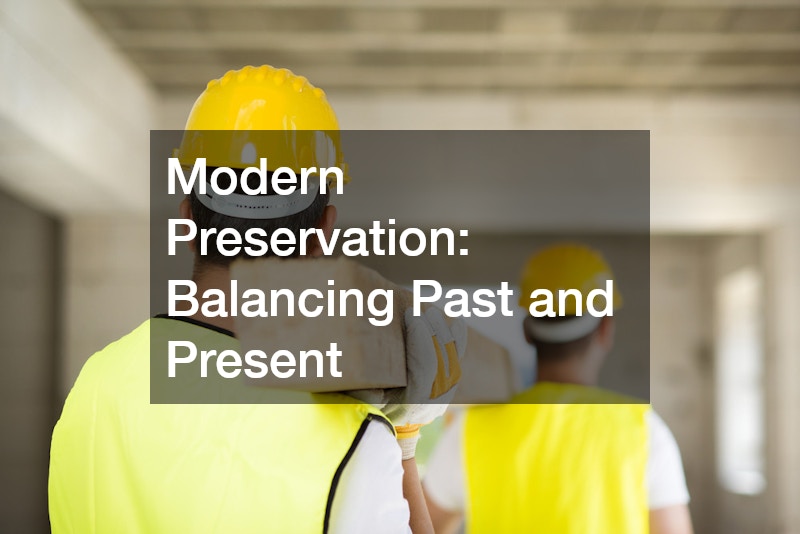In a rapidly modernizing world, where new developments often take precedence over old structures, historic preservation stands as a vital effort to protect, celebrate, and carry forward the architectural and cultural legacy of past generations. Far from being just about saving old buildings, historic preservation is about retaining the soul of communities, honoring traditions, and educating future generations.
What Is Historic Preservation?
Historic preservation refers to the process of identifying, protecting, and maintaining buildings, sites, and objects of historical significance. This could include everything from colonial homes and historic downtowns to ancient ruins and culturally important landmarks. These places tell the stories of our past — stories of struggle, innovation, community, and change — and preserving them ensures those stories aren’t lost to time.
Through historic preservation services, professionals assess the historical value of structures, guide restorations that remain true to original materials and designs, and help communities retain their unique identity while integrating with modern needs.
Why Historic Preservation Matters
1. Cultural Identity and Community Pride
Preserved landmarks often become the face of a community. Whether it’s a courthouse, a schoolhouse, or a theater, these places create a sense of continuity and pride. They reflect the values, struggles, and achievements of those who came before. When a community sees its history honored, it builds a stronger bond with its past and deepens the collective sense of identity.
2. Educational Opportunities
Historic buildings serve as living classrooms. They allow students, researchers, and visitors to engage with history in a tangible way. Walking through a historic site offers insights no textbook can match. The architecture, materials, and layout of these buildings tell stories about technology, craftsmanship, and lifestyles from different eras. Historic preservation ensures these learning opportunities remain accessible.
3. Environmental Responsibility
Demolishing old buildings and constructing new ones consume significant resources and generate waste. Preservation, on the other hand, is inherently sustainable. It promotes the reuse of existing materials and reduces the carbon footprint associated with new construction. Many historic buildings were built with high-quality, durable materials that are hard to find today. By restoring rather than replacing, preservation helps reduce environmental strain.
4. Economic Benefits Through Revitalization
While costs are not our focus here, it’s important to note that preserved historic districts often become vibrant centers of activity. When buildings are restored and repurposed — for instance, turning a 19th-century warehouse into a modern office or a boutique hotel — they can attract visitors, support small businesses, and breathe new life into aging areas. Many cities have seen significant revitalization by investing in historic preservation services and embracing their architectural past.
5. Tourism and Destination Appeal
Historic sites often become major attractions, drawing visitors who are eager to experience the character and story of a place. Whether it’s a famous battlefield, a preserved main street, or a colonial mansion, people travel from far and wide to explore the heritage of different regions. By investing in preservation, communities open the door to tourism opportunities that are both sustainable and culturally enriching.
The Role of Historic Preservation Services
Historic preservation is a delicate process that requires a deep understanding of architecture, history, materials, and conservation techniques. This is where historic preservation services play a crucial role. These experts evaluate the integrity and significance of buildings, advise on proper restoration methods, and ensure that updates remain authentic to the original design.
They also help navigate the legal frameworks around preservation, such as local landmark status, national register listings, or zoning guidelines. For building owners, local governments, or nonprofit organizations, these services are essential in maintaining the accuracy and integrity of restoration efforts.
Modern Preservation: Balancing Past and Present
One of the biggest challenges in historic preservation is finding the right balance between old and new. Communities evolve, and buildings must often be updated for modern use. Whether that means installing new plumbing, adding accessibility features, or improving energy efficiency, modern upgrades should be done in a way that respects the original design.
Historic preservation doesn’t mean freezing a building in time. Instead, it embraces the idea of adaptive reuse — where old spaces are reimagined for new purposes. A former firehouse may become a museum. A train depot could serve as a coffee shop. With thoughtful planning, the history is honored while the space remains useful and vibrant.
Looking Ahead: Why Preservation Still Matters
As cities continue to grow and evolve, the temptation to replace rather than restore will always exist. But once a piece of history is gone, it can never be fully recovered. By investing in preservation, we ensure that our communities retain their distinctiveness and don’t become cookie-cutter replicas of one another.
Preservation fosters a deeper connection between generations. It reminds us of where we’ve come from and inspires us to carry that legacy forward with care and intention.
Historic preservation is about more than old bricks and faded paint — it’s about storytelling, legacy, and identity. It keeps the past alive in meaningful ways, enriches communities, and connects us across time. With the support of skilled historic preservation services, we can ensure that the places that shaped us continue to inspire, educate, and serve for generations to come.







